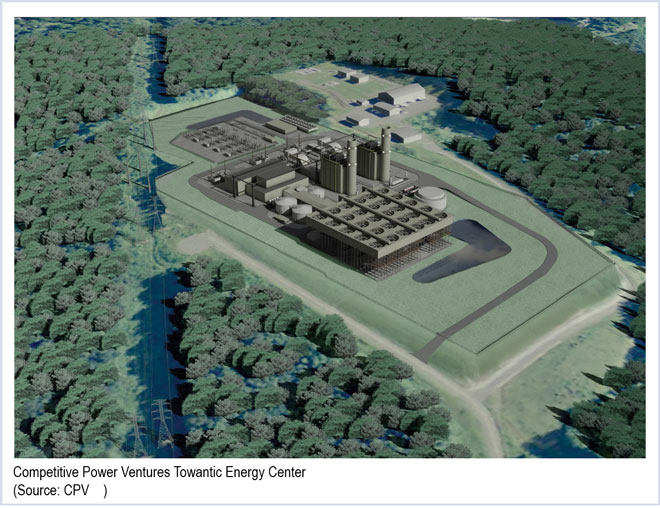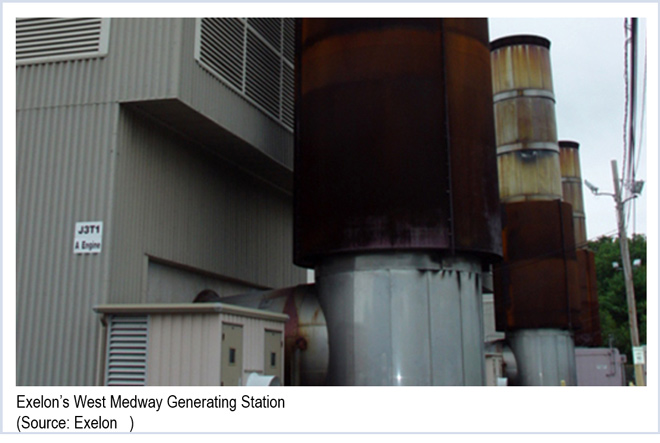By William Opalka
New generators from Exelon, LS Power and Competitive Power Ventures were the apparent winners in New England’s capacity auction last week, while NRG Energy and Public Service Enterprise Group walked away empty handed.
ISO-NE’s ninth Forward Capacity Auction added more than 1,000 MW of gas generation to the region’s mix. Two of the sites are expansions of existing power generation facilities and the third, and largest, is a greenfield site that has been slated for development for at least 16 years. (See Prices up One-Third in ISO-NE Capacity Auction.)
The new resources are a 725-MW combined-cycle resource in Oxford, Conn., under development by Competitive Power Ventures, and Exelon Generation’s two-unit 195-MW CT in Medway, Mass., according to the companies.
Analysts agree that LS Power, with two 45-MW combustion turbines in Wallingford, Conn., was the other successful bidder. LS Power did not return telephone calls seeking comment.
Analysts at ICF International called the new generation a validation of ISO-NE’s Pay-for-Performance program, which increased both performance expectations and penalties for plants that fail to deliver power when called. “The restructured capacity market is working,” ICF said. “Since 2002, most of the capacity additions in ISO-NE have either been sponsored by a state or driven by administratively set prices. FCA 9 is the first auction with major economic capacity additions.”
All of the new generators are believed to have dual-fuel capabilities, meaning they should be able to operate even if they cannot obtain natural gas.
PSEG, NRG Units Did not Clear
PSEG confirmed that its proposed 475-MW combined-cycle plant at its existing Bridgeport Harbor Station site had not cleared and analysts for UBS Securities said it appeared NRG’s proposed 340-MW combined-cycle repowering of its Canal Generating Station also failed to clear.
UBS said NRG still may develop the Canal plant, possibly aided by bilateral contracts with local municipal utilities. The site is in the Southeast Massachusetts-Rhode Island (SEMA) zone, which failed to procure enough capacity resources for the 2018/19 commitment period.
PSEG said that although its Bridgeport plant did not clear in FCA 9, it will continue development work and seeking community approvals to “allow us to be ready when and if the markets indicate support for this investment in the future.”
CPV Site’s Long History
The site of CPV’s Towantic Energy Center in Oxford has a rather storied history. First proposed in the 1990s, the site appeared ready to be developed more than a decade ago until the bankruptcy of Calpine scuttled the plan. Rights to the plant were acquired by General Electric in 2007, which designed the current configuration. It is a partner in the plant with CPV.

CPV spokesman Braith Kelly said the company fully expects the project to be completed on time when the capacity commitment period starts on June 1, 2018.
“The technology is greatly improved from the time of the previous permits, so the environmental impact will be even less than before,” he said.
However, an active citizen group has been opposed to the plant, citing environmental and health concerns.
Delays, if they occur, would not necessarily impair the company’s standing in the ISO-NE market.
“A resource delayed for reasons beyond its control (one example could be lawsuits that delay the issuance of needed permits) can go to [the Federal Energy Regulatory Commission] and request a one-year deferral of its capacity supply obligation,” said Marcia Blomberg, a spokeswoman for ISO-NE.
She also said a resource that cannot meet its schedule can trade out of its obligation through annual and monthly reconfiguration auctions leading up to each capacity commitment period.
“Or it can make a bilateral trade with another resource. This is the most likely path to be taken by resources that are delayed for some reason,” she added.
Peakers
The successful peaking units likely wouldn’t face the challenges CPV has, as they are expansions of existing sites.
However, last year it reached an agreement with Wallingford, Conn., to add two peaking units to its existing array of five 50-MW units. The town owns and operates its own municipal electric system and leases the power plant site to LS Power. The company bought the generating plant from Pennsylvania-based PPL in 2011.
Exelon said both of its Medway units will run mainly on natural gas but will have the ability to run on ultra-low-sulfur distillate fuel oil as a back-up. ISO-NE has been encouraging the development of dual-fuel-capable generation to ease natural gas pipeline constraints during the winter.
Exelon said it is currently in the permitting phase for the Medway expansion. Construction is expected to begin in 2017 and be completed by mid-year 2018.

The Medway facility also is in the generation-short SEMA zone.
UBS estimates the plant, expected to cost about $150 million, will generate $35 million to $40 million in incremental cash flow, based on the $17.73/kW-month clearing price, adding 2 cents per share to Exelon’s earnings.

